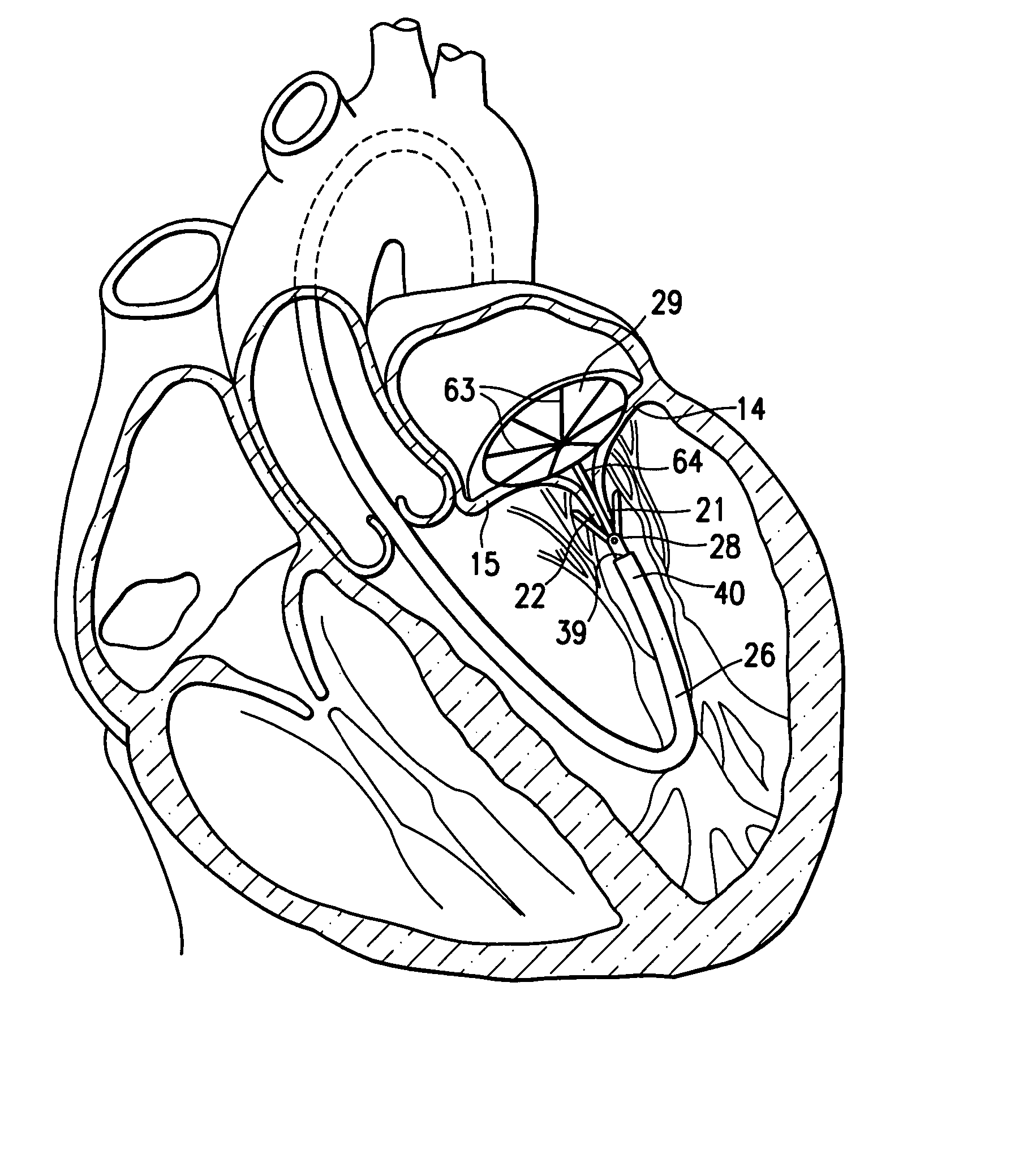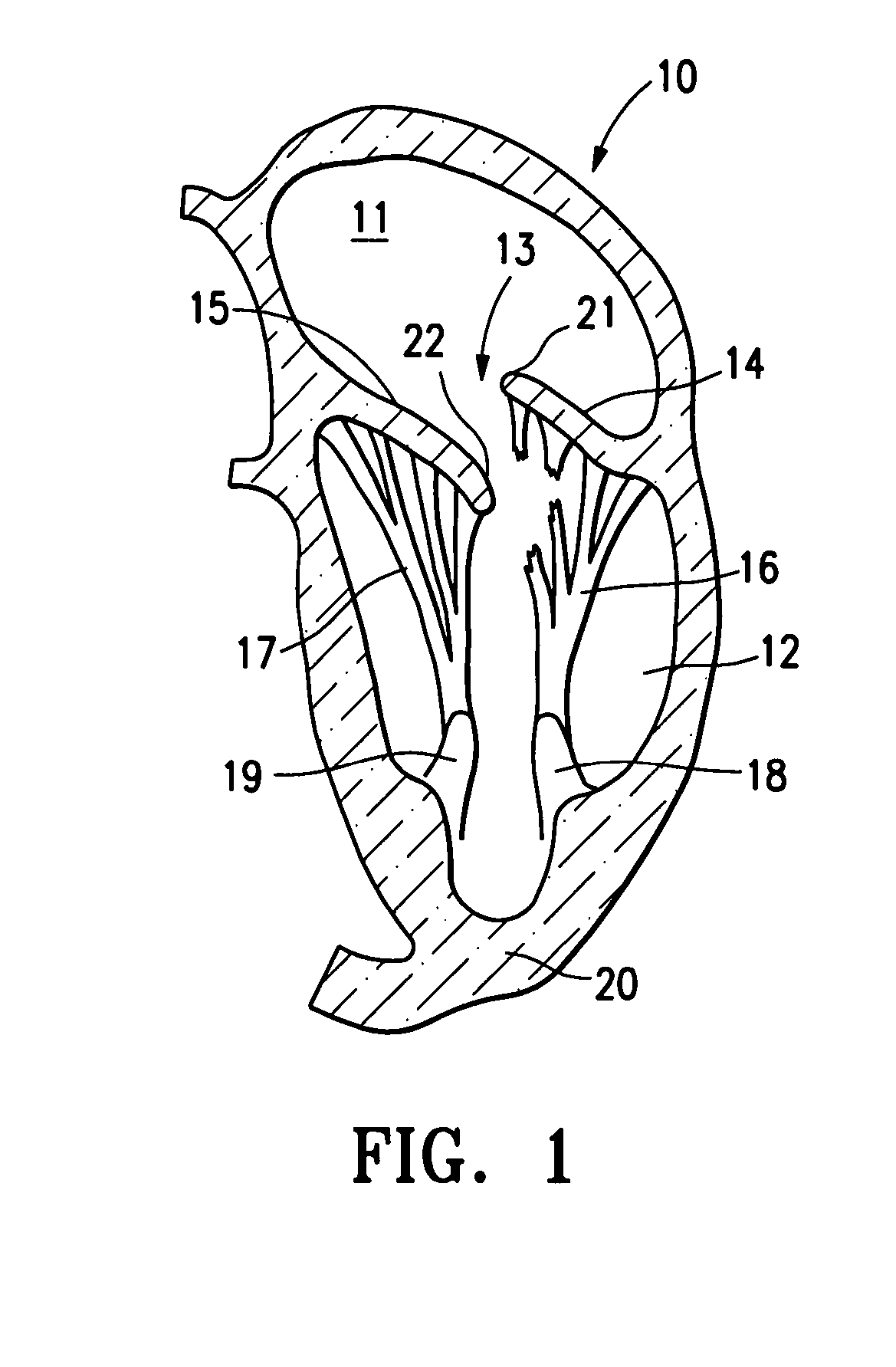Percutaneous treatment for heart valves
a technology for heart valves and percutaneous procedures, applied in the field of therapeutic procedures for patients' hearts, can solve the problems of insufficient success of medical therapy, difficulty in achieving the design of instruments for percutaneous procedures, and insufficient commercialization of instruments for such techniques. , to achieve the effect of preventing reshaping of the ventricular structure, reducing ventricular output, and minimizing ventricular deformation
- Summary
- Abstract
- Description
- Claims
- Application Information
AI Technical Summary
Benefits of technology
Problems solved by technology
Method used
Image
Examples
Embodiment Construction
[0047]FIG. 1 illustrates the left side of a patient's heart 10 in partial cross-section schematically showing the patient's left atrium 11 and left ventricle 12 with a mitral valve 13 disposed between the left atrium and the left ventricle having a posterior valve leaflet 14 and an anterior leaflet 15. Each of the valve leaflets 14 and 15 have cordae tendenae 16 and 17 respectively which are connected to the leaflets and to papillary muscles 18 and 19 respectively within the left ventricle at the apex 20 of the heart. The posterior leaflet 14 of the mitral valve 13 is shown with its cordae tendenae 16 partially torn. The free edge 21 of the posterior leaflet 14 is uncontrolled due to the torn cordae tendenae 16 which makes the valve incompetent to close completely when the heart contracts during systole. The incompletely closed mitral valve 13 results in regurgitation of blood back through the valve into the atrium 11 during systole which in turn results in lowered blood output for ...
PUM
 Login to View More
Login to View More Abstract
Description
Claims
Application Information
 Login to View More
Login to View More - R&D
- Intellectual Property
- Life Sciences
- Materials
- Tech Scout
- Unparalleled Data Quality
- Higher Quality Content
- 60% Fewer Hallucinations
Browse by: Latest US Patents, China's latest patents, Technical Efficacy Thesaurus, Application Domain, Technology Topic, Popular Technical Reports.
© 2025 PatSnap. All rights reserved.Legal|Privacy policy|Modern Slavery Act Transparency Statement|Sitemap|About US| Contact US: help@patsnap.com



